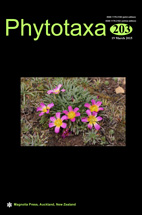Abstract
A coordinated strategy for biosystematics research that addresses the needs of end-users can improve the relevance and impact of research products. The basic types of information that taxonomists provide, common to all organisms, are the names, descriptions, and a mechanism for identifying components of biodiversity, and associated data such as distribution information. This information is provided through taxonomic research.
A biosystematics research strategy has been developed in South Africa to focus on the main gaps in taxonomic knowledge. A prioritisation process has been developed and applied to plants, but can potentially be used for all organisms. The methodology for development of the taxonomic priorities to formulate a research strategy is described. Determining priorities for taxonomic research and development of the strategy will facilitate bridging the gaps among compilers, users and implementers of taxonomic information, and streamline the taxonomy-conservation impediment.

